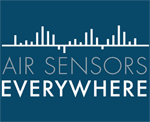 One of the more interesting aspects of small sensors are how easy they can be to assemble. In many ways, technology has enabled us to dramatically simplify assemble, and willing and able individuals help integrate components and software through open source collaboration. it used to be only the very geeky hobbyist, or a very wealthy aficionado could fabricate decent instruments.
One of the more interesting aspects of small sensors are how easy they can be to assemble. In many ways, technology has enabled us to dramatically simplify assemble, and willing and able individuals help integrate components and software through open source collaboration. it used to be only the very geeky hobbyist, or a very wealthy aficionado could fabricate decent instruments.
The recent ‘maker’ movement has been the catalyst for this advancement. It is nothing short of remarkable when even teenagers , with their own insight and a few dollars in parts, can fabricate almost anything imaginable. Even colleges are embracing the Maker movement as described in this New York Times [subscription required] article. Our own hometown of Amherst, where the University of Massachusetts is located, is home to the Amherst Makers group, a group that seeks to provide free open space and advice in making almost anything.
I think the point to share here is this: there are lots of ways to build something, and not everyone will get it right. But the open source maker movement is self-correcting, with a constant stream of improvements to techniques and idea and capacities. Isn’t this what we want when we build capacity empower communities to assess their air quality?
